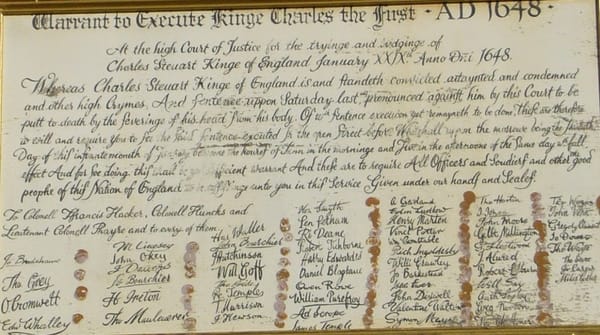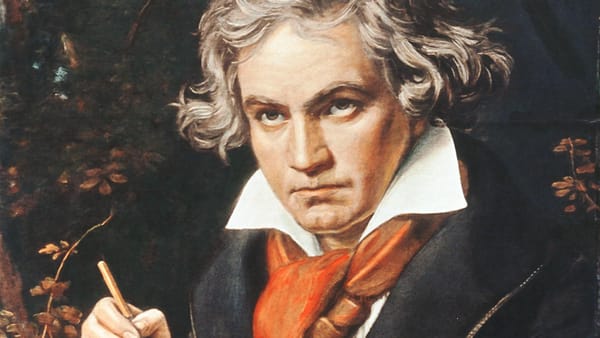The Latin Forensics: How Lorenzo Valla Exposed the Forgery of Empire

In 1440, an Italian humanist with a gift for grammar overturned one of the most powerful political lies in European history.
Lorenzo Valla (1407–1457), a priest and philologist from Rome, demonstrated that the Donation of Constantine—the document granting the pope temporal authority over the Western Roman Empire—was a forgery.
His method was not mystical or theological.
He simply read the Latin too carefully.
The Document That Made a World
For nearly seven centuries, the Donation of Constantine legitimized papal claims to imperial power.
It supposedly dated from the fourth century, when Emperor Constantine the Great allegedly ceded control of Rome and the western provinces to the bishop of Rome “for the salvation of his soul.”
Medieval rulers cited it to justify the pope’s right to crown emperors and to govern the Papal States.
It appeared in the Decretals of Gratian (c. 1140) and shaped church law through the Council of Nicea’s successors.
By the early fifteenth century, the Church’s temporal influence was vast: it owned roughly one-third of the land in Italy, and its income rivaled that of European monarchies.
Few questioned the authenticity of the charter that underpinned this authority.
Valla’s Method
Educated in Latin rhetoric at the University of Padua, Valla belonged to the new humanist generation that treated language as evidence, not ornament.
Around 1439–1440, while serving the King of Naples, he wrote De clamatio de Donatione Constantini, a linguistic analysis of the document’s Latin.
He noticed that the text used vocabulary unknown in the fourth century:
- the word satrapa (from Persian “governor”) appears nowhere in classical or early Christian Latin;
- feudum (fief) belonged to the feudal lexicon of the 9th century;
- administrative terms like pontificalis respublica reflected the bureaucracy of the Carolingian period, not Constantine’s Rome.
Stylistically, the Latin was smooth and rhythmical, unlike the rough syntax of late antiquity.
It read like the prose of 8th-century clerks in the court of Charlemagne.
By comparing word frequency and morphology—what we would now call stylometry—Valla proved the text was written at least 400 years later than claimed.
His conclusion: the Donation was a medieval fabrication designed to legitimize papal territorial power.
Reaction and Repercussion
Valla’s treatise circulated in manuscript for decades before being printed in 1517 by the German reformer Ulrich von Hutten, the same year Martin Luther nailed his Ninety-Five Theses.
Its timing magnified its impact.
For humanists and Protestants alike, Valla’s linguistic reasoning became a weapon against clerical absolutism.
The Vatican initially condemned him, and he narrowly escaped prosecution for heresy, saved by the protection of King Alfonso V of Aragon.
By the 1530s, papal scholars quietly conceded the text’s spurious origin.
In 1592, even the Cardinal Baronius in his Annales Ecclesiastici admitted the forgery.
The Church’s political theology had been undone not by rebellion, but by grammar.
The Birth of Philology as Evidence
Valla’s work marked a decisive shift in epistemology.
Before him, truth in Europe was established by lineage and authority; after him, it required internal consistency and linguistic proof.
His method prefigured the principles of modern historical criticism, textual analysis, and even digital humanities.
In modern terms, he treated Latin as a dataset and authorship as a statistical anomaly.
The historian Anthony Grafton calls this moment “the beginning of evidence-based humanism.”
It anticipated techniques later formalized by Jean Mabillon’s diplomatics (1681) and, centuries later, computational authorship tests that identified stylistic forgeries in literature and code.
Valla was the first to show that words themselves contain timestamps.
The Long Consequence
The collapse of the Donation weakened the ideological bridge between the Roman Empire and the papacy.
It emboldened secular rulers—from Lorenzo de’ Medici to the German Reformers—to challenge clerical sovereignty.
When Luther read Hutten’s 1517 edition, he cited it as proof that “Rome built her throne on a lie.”
The Renaissance faith in reason over revelation had found its founding myth: the pen defeating the mitre.
In hindsight, the Donation controversy transformed philology into a political science.
Every later reform—scientific, religious, or democratic—would rely on the same method: interrogate the text, not the priest.
Truth became a matter of syntax.
Closing Reflection
Lorenzo Valla proved that power can be falsified but language cannot.
Where armies failed, grammar succeeded.
The Donation of Constantine collapsed under evidence invisible to its authors—the logic of its own words.
In that moment, history discovered its first forensic scientist: a man who read Latin the way modern analysts read data, and found the lie in the pattern.
Citation Note:
Primary sources — Lorenzo Valla, De clamatio de Donatione Constantini (1440); Ulrich von Hutten (ed.), Basel Edition (1517).
Historical references — Anthony Grafton, Defenders of the Text (1991); Christopher B. Coleman (trans.), The Forgery of the Donation of Constantine (1922); Jean Mabillon, De Re Diplomatica (1681).
Quantitative data — Papacy land estimates from P. Partner, The Lands of St. Peter (1972).
Secondary sources — Margaret L. King, Renaissance Humanism (2014); Anthony Kaldellis, Byzantine Republic (2015).
This article was written with the assistance of ChatGPT (OpenAI, 2025).





